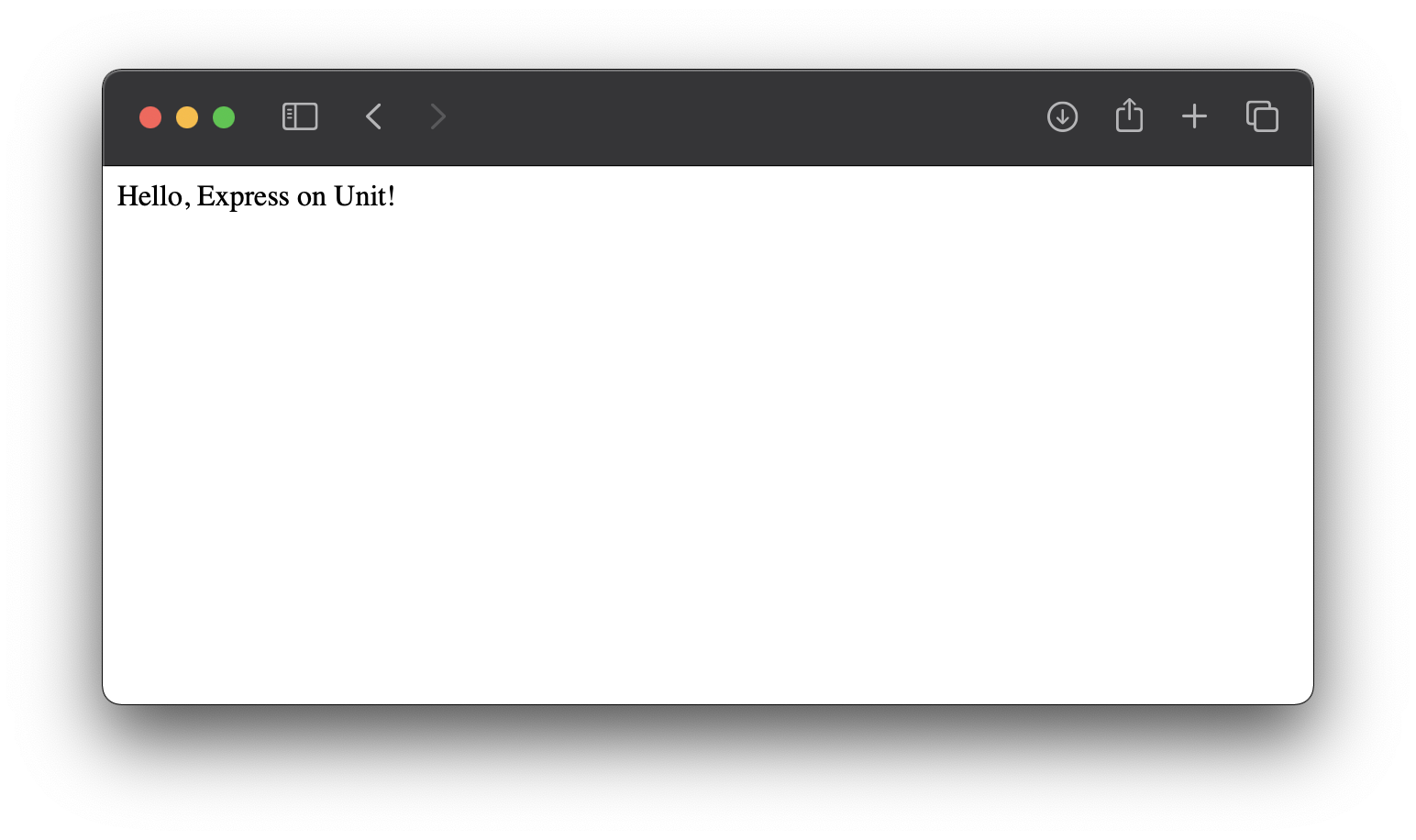Express§
To run apps built with the Express web framework using Unit:
Install Unit with the unit-dev/unit-devel package. Next, install Unit’s unit-http package. Run the following command as root:
# npm install -g --unsafe-perm unit-http
Create your app directory, install Express, and link unit-http:
$ mkdir -p /path/to/app/
$ cd /path/to/app/
$ npm install express --save
Run the following command as root:
# npm link unit-http
Create your Express app; let’s store it as /path/to/app/app.js. First, initialize the directory:
$ cd /path/to/app/
$ npm init
Next, add your application code:
#!/usr/bin/env node const http = require('http') const express = require('express') const app = express() app.get('/', (req, res) => res.send('Hello, Express on Unit!')) http.createServer(app).listen()
The file should be made executable so the application can run on Unit:
$ chmod +x app.js
Run the following command (as root) so Unit can access the application directory:
# chown -R unit:unit /path/to/app/
Note
The unit:unit user-group pair is available only with official packages, Docker images, and some third-party repos. Otherwise, account names may differ; run the ps aux | grep unitd command to be sure.
For further details, including permissions, see the security checklist.
Next, prepare the Express configuration for Unit:
{ "listeners": { "*:80": { "pass": "applications/express" } }, "applications": { "express": { "type": "external", "working_directory": "/path/to/app/", "executable": "/usr/bin/env", "arguments": [ "node", "--loader", "unit-http/loader.mjs", "--require", "unit-http/loader", "app.js" ] } } }
Upload the updated configuration. Assuming the JSON above was added to
config.json. Run the following command as root:# curl -X PUT --data-binary @config.json --unix-socket \ /path/to/control.unit.sock http://localhost/config/
Note
The control socket path may vary; run unitd -h or see Startup and Shutdown for details.
After a successful update, your app should be available on the listener’s IP address and port:
